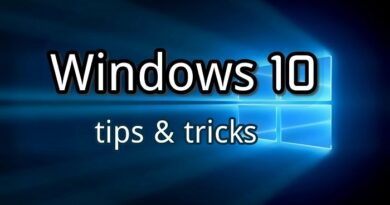Guide to Safely Eject USB Mass Storage Devices and Avoid Errors
Table of Contents
In today’s digital age, USB mass storage devices like flash drives and external hard drives are indispensable for storing and transferring data. However, safely ejecting these devices can sometimes be challenging, leading to errors such as “Problem Ejecting USB Mass Storage Device: This device is currently in use.” To help you navigate this issue, we’ve compiled an exhaustive guide detailing five proven methods to eject your USB devices and protect your precious data safely.
Method 1: Using Device Manager for Ejection
Device Manager is a powerful tool in Windows that allows you to manage hardware connected to your computer. To safely eject a USB device using Device Manager, follow these steps:
- Step 1: Press Win + Q, type “Device Manager,” and open it.
- Step 2: Look for the disk category in the devices list and expand it to show all connected storage devices.
- Step 3: Locate the USB storage device you wish to eject, right-click on it, and select “Uninstall.”

Method 2: Disk Management for Safe Ejection
Disk Management is another useful feature in Windows for managing drives. Here’s how to use it for ejecting USB storage devices:
- Step 1: Press Windows+R keys together to open a Run window.
- Step 2: Type “diskmgmt.msc” in the Run window and press Enter to open Disk Management.
- Step 3: Find the USB device you want to eject, right-click on it, and choose “Eject.”
Method 3: Ejecting via File Explorer
File Explorer provides a straightforward way to eject USB flash drives:
- Step 1: Navigate to “This PC” or “My Computer” and locate the USB device.
- Step 2: Right-click on the device and select “Eject.”
Method 4: Troubleshoot USB Flash Drive Issues
Sometimes, USB flash drives may encounter errors that prevent safe ejection. To troubleshoot:
- Use the Hardware and Devices troubleshooter in Windows. Note that this tool has been removed from Settings since Windows 10 1809. To access it, use the command
control.exe /name Microsoft.Troubleshootingin the Run window.

Method 5: Formatting the USB Flash Drive in FAT32 (Caution Required)
Formatting your USB flash drive in FAT32 can enhance its compatibility and reduce the likelihood of ejection errors:
- Step 1: Press Win + E to open File Explorer.
- Step 2: Right-click on the USB flash drive and select “Format.”
- Step 3: Choose FAT32 from the File system dropdown menu.
- Step 4: Click “Start” to begin formatting.
- Step 5: After formatting, try ejecting the USB flash drive again.

Additional Tips for Safe USB Device Ejection
- Close All Active Files and Applications: Before ejecting, close all files and applications using the USB device.
- Use the “Safely Remove Hardware” Icon: Located in the system tray, this icon allows for the safe ejection of USB devices.
- Wait for Data Transfer Completion: Always wait for any ongoing data transfer to complete before ejecting.
- Regularly Backup Data: To avoid data loss, regularly back up the data on your USB devices.
What are the common reasons for the ‘Problem Ejecting USB Mass Storage Device’ error?
This error usually occurs when the USB device is still in use, meaning files from the device are open or a program is accessing the device. It can also happen due to background processes that are not visible to the user.
How can Device Manager be used to safely eject a USB device?
To safely eject a USB device using Device Manager, open Device Manager (press Win + Q and type “Device Manager”), find the USB device under the disk category, right-click on it, and select “Uninstall.” This will safely remove the device from your system.
Is it safe to eject a USB device using File Explorer?
Yes, ejecting a USB device through File Explorer is safe. Navigate to “This PC” or “My Computer,” right-click on the USB device, and choose “Eject.” This method safely prepares the device for removal.
What should be done before formatting a USB flash drive in FAT32?
Before formatting a USB flash drive in FAT32, it’s crucial to back up any data on the drive, as formatting will erase all data. After backing up the data, you can proceed with the formatting process in File Explorer.
Why is it important to use the ‘Safely Remove Hardware’ feature?
The ‘Safely Remove Hardware’ feature ensures that all processes using the USB device are properly closed and that there is no data transfer occurring at the time of ejection. This prevents data corruption and hardware damage.
Can a USB device be ejected while data is being transferred?
No, it’s not advisable to eject a USB device during data transfer. Interrupting a data transfer can lead to data loss or corruption. Always wait for the transfer to complete before ejecting the device.
What is the benefit of formatting a USB flash drive in FAT32?
Formatting a USB flash drive in FAT32 increases its compatibility with a wide range of devices and operating systems. It’s a versatile file system that’s particularly suited for removable storage devices like USB flash drives.
How can the Hardware and Devices troubleshooter be accessed in Windows 10 version 1809 and later?
In Windows 10 version 1809 and later, the Hardware and Devices troubleshooter can be accessed by running the command control.exe /name Microsoft.Troubleshooting in the Run window. This tool helps in identifying and fixing hardware-related issues.
Conclusion
Safely ejecting USB mass storage devices is crucial to prevent data loss and device errors. By following the methods outlined in this guide, you can ensure the integrity of your data and the longevity of your USB devices.


